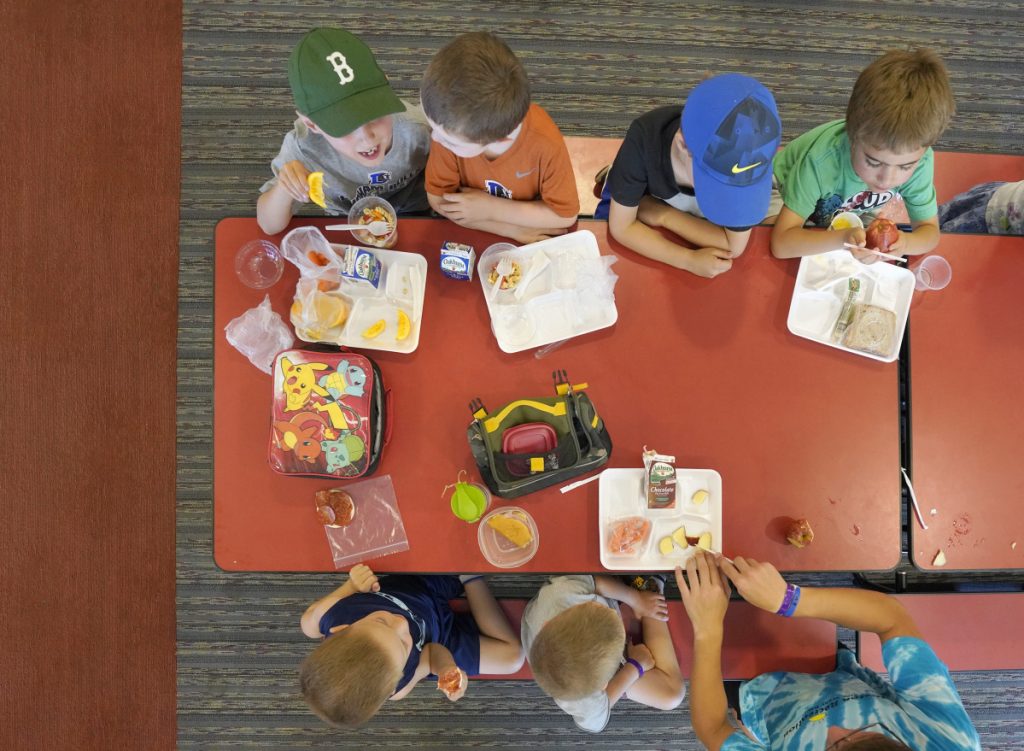United States
Fact Sheet

2022 United States Hunger Facts and Statistics
Why is ‘food security’ the term we use instead of hunger in the U.S.? What do the latest statistics reveal about the challenges families face in securing their next meal? Discover why over 17 million households are food insecure and explore the root causes in our latest fact sheet.
Test Your Knowledge!
x
Hunger Quiz: Food Insecurity in the United States 2022
Are you ready to challenge your understanding and make a real impact? Each completed quiz doesn’t just boost your awareness—it also translates into tangible aid for those in need. As you uncover surprising truths about hunger in America, Hunger Notes will make a donation to organizations responding to hunger.
Looking for More?
x
U.S. Hunger Links
Dive deeper into the issue of U.S. food insecurity with curated resources from our trusted partners. Discover the dedicated organizations joining forces to eradicate hunger worldwide.
X
x
x
United States Hunger in the News
Read the latest news and analysis about U.S. food insecurity below.
Philadelphia Food Scraps to Become Gas to Power Trucks and Buses
Philadelphia’s food scraps may become fuel for buses and trucks, under a plan to build a $120 million anaerobic digester to produce natural gas....
Community in combat with food insecurity
Purdue University's ACE Campus Food Pantry allows anyone with a university ID to pick up food or other donated goods thanks to volunteers and the student farm....
How the Other Half Eats
City Lab explores how someone in Manhattan, New York City, can make $1.86 in daily SNAP benefits work in a county where the average low-income meal costs 113% of SNAP....
Military enlistees struggle with food insecurity
With three kids at home, including a newborn, managing a family budget is always a struggle for Theresa Washington and her husband. They're trying to survive on his Navy salary, which, some months, doesn't entirely cover everything....
Case Western Reserve University researchers trying to find solutions to Cleveland’s hunger problems
Case Western Reserve University researcher Darcy Freedman has received a nearly $1 million grant for a three-year long research project that aims to improve food systems in Cleveland, Ohio....
Fighting ‘Quiet Hunger’ in Every Philadelphia Zip Code
Food insecurity plagues more than 20 percent of people in Philadelphia and more than 1.6 million people across Pennsylvania. Broke in Philly reports on how people stretch their food budgets in one neighborhood....
Hungry for change: urban foragers take the law into their own hands
While foraging is an ancient art that has taken place in US cities for as long as they’ve existed, the practice has exploded in popularity in recent years. There are some who forage because they struggle to afford food, but that is a small percentage, according to a Johns Hopkins study....
Climate Change Threatens Midwest’s Wild Rice, A Staple For Native Americans
Northern wild rice, also known as manoomin, is a staple food in Ojibwe communities across the Upper Midwest, where it's also used in traditional ceremonies. And, like any wild crop, some years yield more than others, depending on the weather. With harvests decreasing due to extreme weather, states a...

Summer meals take the edge off persistent child hunger in Maine
While the rate of childhood food insecurity – an official measure of hunger – has declined both in the state and nationwide, Maine still has a rate higher than the national average. In 2016, 19.8 percent of Maine children lived with food insecurity. The childhood food insecurity rate for the Uni...
Partnering With Puerto Rico: New York Forms New Agricultural Trade Partnership
New York Farm Bureau applauds a new agricultural trade partnership designed to strengthen Puerto Rico’s economy in the wake of hurricanes Irma and Maria, which ravaged the Caribbean island last year....











